
 If you're a contractor grappling with deep soil stabilization challenges or looking to expand service offerings, Alchatek offers comprehensive support and training to elevate skills and expand business opportunities. Here's how the Alchatek team can assist you in enhancing your Deep Lock® soil stabilization capabilities:
If you're a contractor grappling with deep soil stabilization challenges or looking to expand service offerings, Alchatek offers comprehensive support and training to elevate skills and expand business opportunities. Here's how the Alchatek team can assist you in enhancing your Deep Lock® soil stabilization capabilities:
Skill Upgrades for Contractors
- If you're currently facing difficulties with deep soil stabilization projects, Alchatek provides the expertise to upgrade your skills and tackle these challenges effectively.
- For slab lifting contractors, incorporating the Deep Lock® process into your service offerings can be a significant step towards diversifying your business and increasing revenue.
Technical Guidance and Support
- Alchatek's technical support team is highly skilled in on-the-job applications of deep soil stabilization techniques.
- The team brings a wealth of experience, having successfully consulted on a wide range of projects.
- On-the-job training is available, offering practical, hands-on learning to ensure you are fully equipped to handle various stabilization scenarios.
Comprehensive Training Programs
- Alchatek offers training programs, which are designed to provide in-depth knowledge and hands-on experience in the latest soil stabilization techniques.
- Training programs are an excellent opportunity for contractors to learn directly from experts and gain valuable insights into the industry’s best practices.
Collaboration with Engineers
- Alchatek assists contractors in working with engineers. This includes providing education and specification assistance to ensure that engineers are well-informed about the Deep Lock® process and its benefits.
- The support team can help bridge the gap between contractors and engineers, facilitating smoother project execution.
Project Design Support
- This service ensures that your deep soil stabilization projects are well-planned, efficient, and effective.
- Alchatek experts can help you design your projects from the ground up, ensuring the best possible outcomes for your clients.
Contact Alchatek Today
If you’re looking to enhance your deep soil stabilization services or need expert assistance, reach out to Alchatek today. With comprehensive support, training, and vast experience, you can confidently tackle any soil stabilization challenge and grow your business.
Call 404-618-0438 or fill out this form to contact Alchatek now!



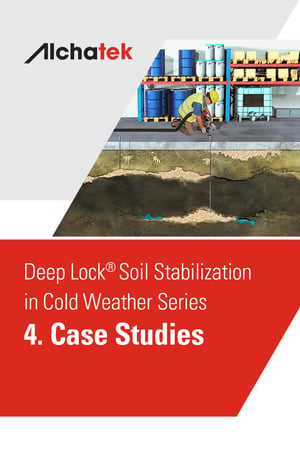 This post features three case studies that highlight the versatility and effectiveness of the Deep Lock® process across a variety of applications.
This post features three case studies that highlight the versatility and effectiveness of the Deep Lock® process across a variety of applications.
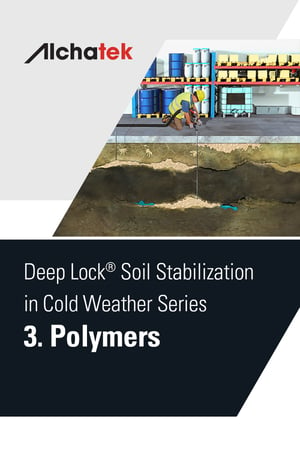 In the world of soil stabilization and concrete leveling, the choice of materials is as important as the technique used. Alchatek's Deep Lock® process utilizes a range of specialized structural polymers, each designed to cater to specific stabilization needs.
In the world of soil stabilization and concrete leveling, the choice of materials is as important as the technique used. Alchatek's Deep Lock® process utilizes a range of specialized structural polymers, each designed to cater to specific stabilization needs.
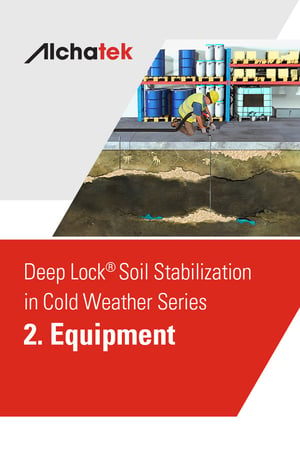 The Deep Lock® process, a robust and effective method for soil stabilization, requires specialized equipment to ensure precision and efficiency. Here's a breakdown of essential equipment for Deep Lock® soil stabilization in cold weather:
The Deep Lock® process, a robust and effective method for soil stabilization, requires specialized equipment to ensure precision and efficiency. Here's a breakdown of essential equipment for Deep Lock® soil stabilization in cold weather:
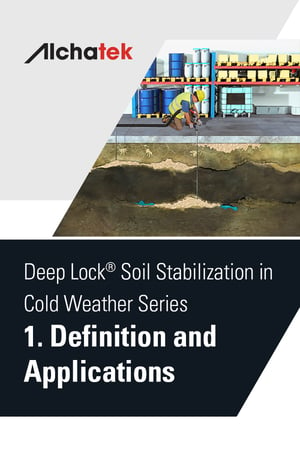 Deep Lock® is a specialized deep soil stabilization process developed by Alchatek. It involves injecting a structural polymer deep into the soil, where it expands and solidifies. This process enhances the stability and strength of the soil, making it an effective solution for various geotechnical challenges. One key feature of Deep Lock® is its ability to stabilize soil below the freeze/thaw line, making it particularly useful in cold weather conditions.
Deep Lock® is a specialized deep soil stabilization process developed by Alchatek. It involves injecting a structural polymer deep into the soil, where it expands and solidifies. This process enhances the stability and strength of the soil, making it an effective solution for various geotechnical challenges. One key feature of Deep Lock® is its ability to stabilize soil below the freeze/thaw line, making it particularly useful in cold weather conditions.
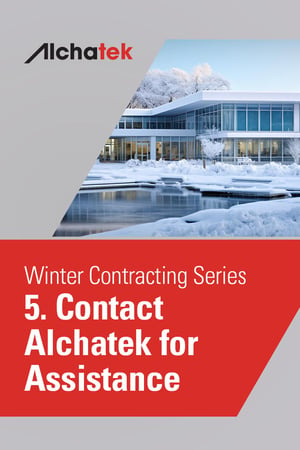 For contractors seeking productive work during the slower winter months, Alchatek is here to help every step of the way.
For contractors seeking productive work during the slower winter months, Alchatek is here to help every step of the way.


 It's time to revisit the idea of remaining profitable during the winter months, but where does one begin?
It's time to revisit the idea of remaining profitable during the winter months, but where does one begin?
 Contractors specializing in chemical grouting in the northern United States are often constrained by the seasons when it comes to outdoor soil stabilization and slab lifting tasks. However, with strategic planning, they can also find profitable avenues to keep busy during winter.
Contractors specializing in chemical grouting in the northern United States are often constrained by the seasons when it comes to outdoor soil stabilization and slab lifting tasks. However, with strategic planning, they can also find profitable avenues to keep busy during winter.
 Alchatek specializes in cutting-edge solutions for infrastructure repair, including the use of polyurethane grouts for sealing leaks. In addition to manufacturing repair materials, we can refer you to contractors skilled in a wide range of applications, from crack injection to curtain wall grouting and more. We're passionate about helping municipalities and other organizations make the most of their budgets while ensuring the long-term integrity of their infrastructure.
Alchatek specializes in cutting-edge solutions for infrastructure repair, including the use of polyurethane grouts for sealing leaks. In addition to manufacturing repair materials, we can refer you to contractors skilled in a wide range of applications, from crack injection to curtain wall grouting and more. We're passionate about helping municipalities and other organizations make the most of their budgets while ensuring the long-term integrity of their infrastructure.


 Proactive budget planning is essential, especially as the fiscal year nears its end, for sustainable city growth. Advanced leak sealing demonstrates an impactful way to utilize end-of-year budgets. Strategic spending can yield long-term municipal benefits through enhanced infrastructure integrity. Forward-thinking budget optimization, aided by innovative repair and maintenance solutions, is key for sustainable, resilient growth.
Proactive budget planning is essential, especially as the fiscal year nears its end, for sustainable city growth. Advanced leak sealing demonstrates an impactful way to utilize end-of-year budgets. Strategic spending can yield long-term municipal benefits through enhanced infrastructure integrity. Forward-thinking budget optimization, aided by innovative repair and maintenance solutions, is key for sustainable, resilient growth.